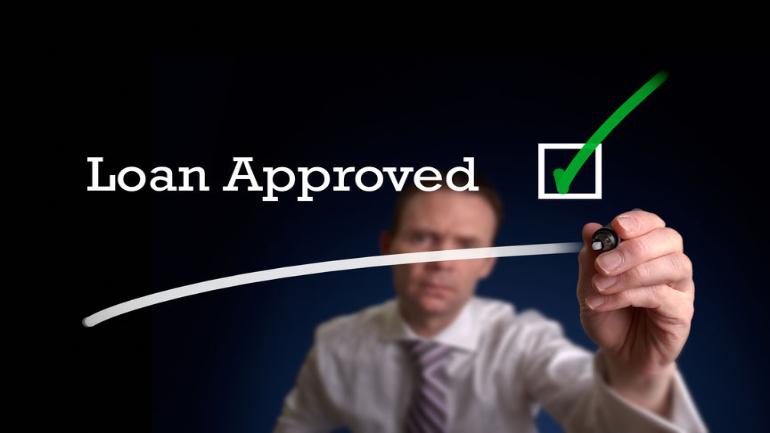When you apply for a loan, there’s a chance the bank might reject your application, and that’s not something you want to hear when you’re that close to getting your dream home.
While you can’t be 100% sure that the bank will approve your application for a housing loan, you can significantly increase your chances by following these tips!
1. Healthy Credit Reports
One of the first things a bank will check on when you apply for a housing loan in Malaysia is what your credit reports look like.
It’s one of the ways for banks to know that you can pay back whatever you’re borrowing.
They'll refer to the information provided by credit reporting services such as CCRIS and CTOS, which tells them if you’re in good financial standing or not.
1(A) What Is CCRIS?
CCRIS stands for Central Credit Reference Information System.
It’s a system created by the Credit Bureau of Bank Negara Malaysia (BNM), that provides standardised credit reports on a potential borrower.
1(B) What Kind Of Information Is In My CCRIS Report?
BNM is provided with updates every month from other banks, insurance providers, and utility companies to compile the information that comprises your CCRIS report.
A CCRIS report consists of information such as:
- Outstanding Credit(s): This is a summary of all your outstanding loans and credits. including those related to joint borrowing, and relevant business or commercial loans.
- Special Attention Account(s): These are impaired loans that have been flagged by a financial institution for special monitoring due to fallen creditworthiness of the borrower. This means that special measures have to be taken in order to recover that loan.
- Application(s) for Credit: All of your pending credit applications, whether approved or rejected in the past 12 months.
All outstanding monthly instalments will be recorded in column N that says “Installment in Arrears for Last 12 Months”.
For example, if there are 2 different outstanding instalments in January, you’ll be accounted for 2 credit score under that month. Your total credit score of the year will be the accumulated outstanding credits every month.
In short, the higher your credit score is, the less likely you’ll be approved for a bank loan.
To get your CCRIS report, you may either:
- Request in person – You can request a copy of your credit report in person at the BNM Head Office and BNM Regional Offices.
- You must present an application form along with a copy of your MyKad and requested supporting documents such as driving licence or passport. Alternatively you can access this report automatically using a kiosk at participating BNM branches. Simply insert your MyKad into the credit kiosk, provide your thumbprint, and once your identity has been verified, you can print a CCRIS report.
- Request by correspondence – You can mail, e-mail, or fax your request for a report to BNM TELELINK, Bank Negara Malaysia.
- It’s important to check that you’ve attached all requested documents as part of your correspondence.
- Get it via online – It’s now possible to view your CCRIS report online via the eCCRIS service.
- This helpful online platform provides simple, secure access to your CCRIS report whenever you need it. The service is free to use, but requires initial registration in person at any branch of BNM Malaysia. Once you’re registered, you can check your CCRIS report at your leisure through the dedicated online eCCRIS portal.
1(C) What Is CTOS?
CTOS stands for Credit Tip-Off Service, and it’s different from CCRIS because CTOS is a privately-owned company while CCRIS is governed by BNM.
CTOS provides a credit report that’s widely used by banks and other financial institutions in Malaysia to assess your repayment capabilities and creditworthiness.
Financial institutions usually use multiple credit reports to determine your financial health, and CTOS is one of the most widely used reports in conjunction with CCRIS.
1(D) What Kind Of Information Is In My CTOS Report?
CTOS derives information about you from various public sources, such as the Malaysian Department of Insolvency (MDI), Registrar of Societies(ROS), Companies Commission of Malaysia (CCM), and more.
The information contained in a CTOS report includes:
- Verification of your identity: Your name, IC number, and company registration number
- Directorships and Business Interests: Your holdings in incorporated companies
- Legal Actions Against: Whether anyone has taken legal action against you, or whether you have filed for bankruptcy
- Trade Referees and Subject Comments: This section is where you can leave your own comments regarding your financial status.
Out of all complicated sections, section 4 which says “CTOS score” matters most. It shows a score that takes into account of all credit information.
It works the exact opposite as CCRIS. For CTOS, a higher credit score indicates better creditworthiness.
To get your CTOS report, you’ll just have to create an account on the official website of CTOS and access your report online.
1(E) Why Are CCRIS And CTOS Reports Important?
Firstly, it’s important to remember that neither CTOS nor CCRIS would blacklist individuals with bad financial records, and they don’t form any sort of opinion on your financial status.
They merely provide factual information regarding your creditworthiness.
If these reports indicate that you’re not in debt and have good financial standing, then the likelihood of the bank approving your application and granting your loan application increases.
This means you can borrow more for your housing loan.
If your record isn’t looking good, you may not be able to borrow as much, or your interest rate would be higher to compensate for the financial risks.
In a worst-case scenario, the bank may reject your loan application and you’ll have to start over.
1(F) How Do I Improve My CCRIS And CTOS Records?
One of the easiest and straightforward ways is to pay your bills on time.
Banks favour people who shows that they’re reliable and responsible when it comes to payments. If you have a history of being late with repayments, it’ll be difficult for you to get a loan.
Also, you should try to reduce your number of debts.
Taking up a new loan when you have many other financial obligations isn’t a good idea, and banks can easily look up what other debts you have on hand from your credit reports.
Continue reading Part 2 of this article here.
_PH_Banner_(Desktop)(1200x180px).png)
.jpeg)






.jpg)

.jpg)

.jpg)

.jpeg)

